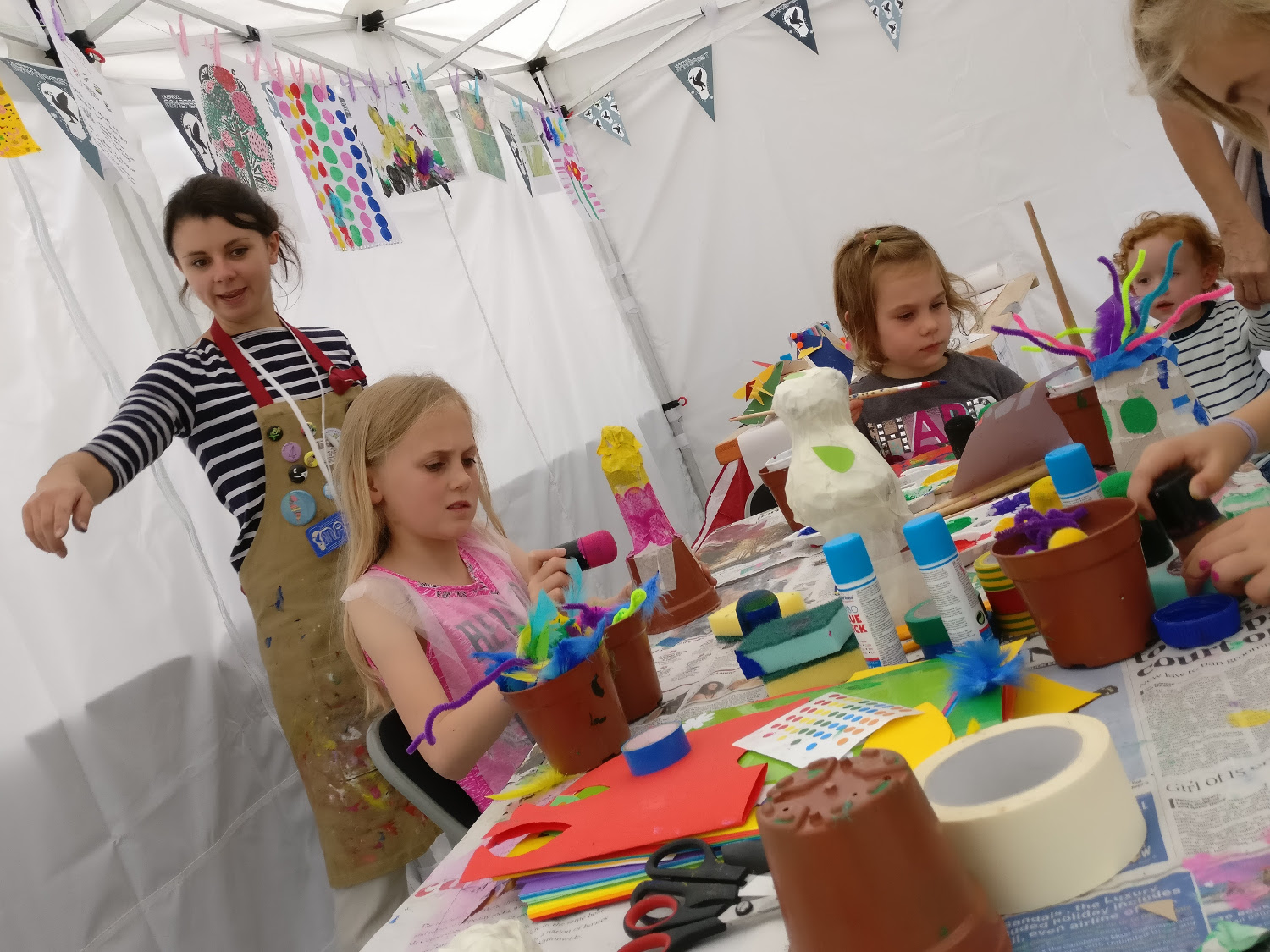Liverpool MakeFest’s third year shows it to be on a very special trajectory – getting better every year, with no sign of slowing down. The MakeFest showcases the best of the Liverpool and North West maker community, with a few special guests from further afield. Held over four floors and the roof of the city’s historic library building, it’s an exciting blend of old and new crafts, with plenty of hands-on activities for all the family.
Up on the roof
On the roof, two technologies from well before the microcomputer era were being showcased: radio, the original ‘wireless’; and telescopes from the local astronomical society. Local arts organisation FACT brought everything up to date by tuning into data from satellites passing overhead.
Outer space continues to inspire many people to learn about technology, and DIY rockets were displayed at the entrance to the library, competing with Liverpool MakeFest’s resident Dalek for attention. VR, drones, and games that incorporated IoT devices to bring play into the wider world represented the cutting edge of present-day technology, while artist group Domestic Science took participants back in time with their RFID tag-based MileCastles, part of the Hadrian’s Castle exhibition taking place this summer along the length of Hadrian’s Wall.
Crossovers between old and new took various forms. The Liverpool League of Gentlemen and Extraordinary Ladies decorated the library with their presence in full steampunk regalia. Rachel Freire demonstrated her mi.mu gloves, along with a range of sensors and feedback mechanisms incorporated into clothing. The gloves, designed in collaboration with singer-songwriter Imogen Heap, are gestural interfaces for composing and playing music. Thermochromic fabric was demonstrated to young makers by Laura Pullig, an e-textile specialist who was also showing and selling plant-based electronics kits. An electronic/fabric crossover was also found in light-up wind socks; and an automatic knitting machine that controls lighting, sound, and projection by using binary values on a punch card to create RGB colour values. Something is also knitted as a by-product of the process: a novel form of documentation.
Traditional crafts were also represented, including woodworking and guitar making; and plenty of messy gluing, painting and modelling for younger visitors. Many of the hands-on activities were provided by educational institutions, including Edge Hill University, and local educational projects such as Bootle’s Little Sandbox tech club for 8- to 12-year-olds. Pi-based learning was available in the form of Android Things, Scratch, Python and EduBlocks (see issue 53 of The MagPi), as well as tiny Pi-powered robots fighting to pop each other’s balloons in the Micro Pi Noon activity.
The exa.foundation brought a full range of Pi-based programming and physical computing to the event. Exa’s Alan O’Donohoe (of Raspberry Jam fame) had an interesting tale to tell: “A young child fan of the Raspberry Pi was telling me how great he thought it was, just as I spotted Peter Lomas [designer of the Pi]. When I introduced Pete to the young lad, he asked me to photograph them together. It made his day – probably his whole weekend. The lad could barely speak, he was that thrilled.”

Tech with a purpose
If 3D printing has begun to seem old hat to you, consider two of the exhibitors. MeLT-3D were making pasta cutter dies with their printer, along with moulds for everything from silicone, plaster, and metal to chocolate! Dr Laura James of Field Ready showed some of the 3D-printed pipe fittings and medical supplies that are saving lives at disaster scenes across the planet. Field Ready relies on a worldwide network of engineers and makers to support them with practical modelling work and engineering know-how.
For the full, and inspiring, list of exhibitors, visit the portfolio on the website.
This year’s event saw the organisational duties taken up by Jen Fenner and Mark Sabino, working with Central Library’s Denise Jones. We asked Mark what stuck in his memory about this year’s event. “My personal highlight has to be the women in tech showcase, which saw Rachel Freire’s first show in her home town after 14 years’ absence to specialise in controversial fashion, now collaborating with technologists on a variety of wearables including whole-body-interaction instruments,” he told us. “Also, having Field Ready and the Humanitarian Makers demonstrating what they do in crisis situations with 3D-printed solutions, along with FACT tracking the ISS, and Quantum Tech Club exposing the sun via radio.”
Mark was also enthusiastic about having “yet another year to plan, to include the spectaculars we never managed for MakeFest 2017 – which includes starting a crowdfunding exercise to buy John Cartwright’s Dalek, as he’s retiring as the owner/operator.”
We look forward to Liverpool MakeFest 2018. If you can’t wait, there is a MakeFest at Manchester’s Museum of Science and Industry, 19-20 August, amid the vivid exhibits of industrial milestones in manufacturing, flight, and computing. If you can’t find an event near you, get down to your local makerspace and see what’s planned – or get involved yourself. There’s a generation waiting to be inspired by your engineering and maker skills.









